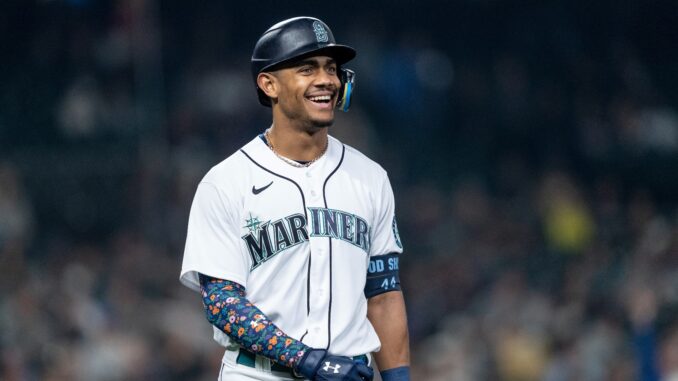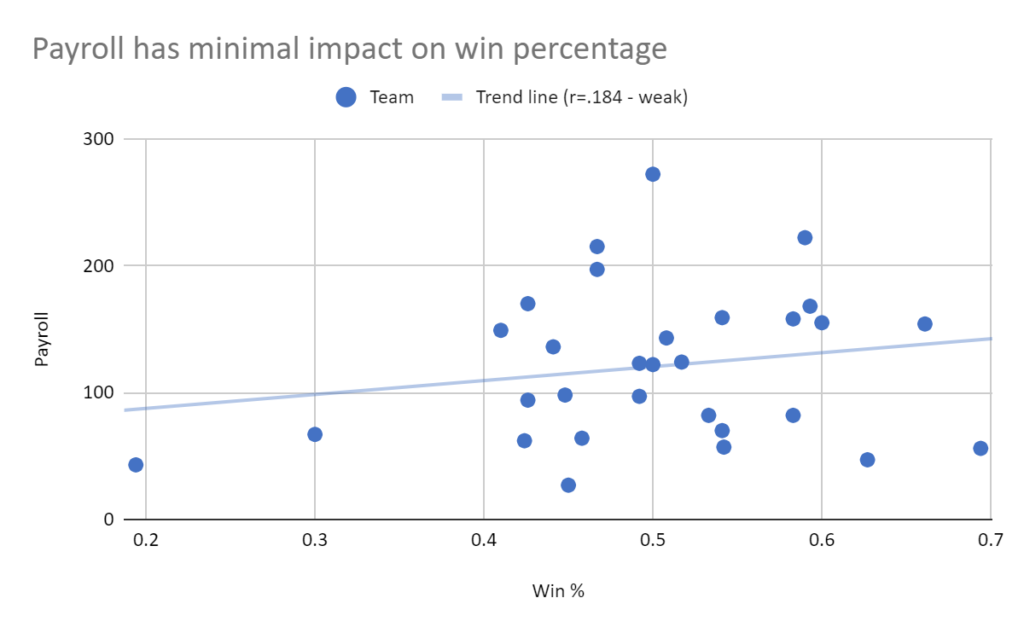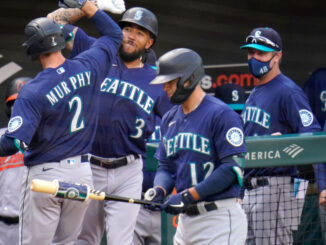
Over the weekend, as the Seattle Mariners were being swept by the Texas Rangers, Mariners’ Twitter was abuzz with the sentiment that the team’s woes were a direct result of not spending enough money in free agency during the offseason. After all, the Rangers had emptied the bank account, and they were beating the crap out of the Mariners right before the fan’s eyes. So, any Mariners’ shortcomings this season had to be because they, too, hadn’t snagged some pricey free agents over the winter heading into 2023. After all, the Rangers had, and they were winning. The Mariners hadn’t really, and they were losing. Ergo, spending more equals winning more. Right?
Well, not so fast Mariners Twitter heads, or even those fans who might have been thinking the same thing but are smart enough to avoid the cesspool unleashed by Elon Musk and his “free speech” campaign. It turns out that spending more money is not necessarily a determinant of overall success. If it were, the New York Mets, with an opening day payroll of $272 million for the 26-Man roster, wouldn’t be below .500 and in third place in the NL East, and the Tampa Rays, with an opening day payroll of $56 million for twenty-six of their players on the major league roster wouldn’t be in first place in the formidable AL East a head of the juggernaut of wealth, the Baltimore Orioles. Wait, what? Oh yea. They’re ahead of the New York Yankees also. And the Boston Red Sox.
But to be fair, citing payrolls for the teams in New York and comparing them to the historically frugal yet efficient, Rays isn’t exactly rocket science or even a rigorous economic return on investment analysis. So, what do we discover if we look at what money buys for all thirty teams in baseball? And how do the Mariners fare?
Well, the question of opening day payroll is pretty easy to find. The good folks at Sportrac keep tabs on this for all the major sports, teams, and individuals. You can even find out the minute details of the contract your favorite (or most loathsome) player is making. Using the same data cited for the Mets and the Rays, the Seattle Mariners began the season 18th, slightly below league average, with a 40-man payroll of $139.8 million. With $98.9 million devoted to the 26-man big league roster on opening day, the Mariners rank 17th, just below the Boston Red Sox. A lot of the discrepancy between the 40-man payroll and 26-man payroll across the league depends heavily on the ages of the players. Older players with big league experience tend to make more than younger players just getting started. Relatively speaking, the Mariners are a young team, I.e., Julio Rodriguez, Jarrad Kelenic, etc.
Also, the question of winning percentage is even easier to find. Look in the sports section of your local newspaper. Don’t get a newspaper. (Wait. What? Oh yeah, it’s 2023.) Go to ESPN.com or Baseball Reference, or MLB. There you will find the current standings – wins, losses, games ahead or behind first place in respective divisions. In many cases, you’ll find runs scored, runs allowed, run differential, and maybe even playoff odds. But for sure, you’ll be able to find a winning percentage. So, if you check the payroll and then check the standings and your team’s winning percentage, you can judge if your favorite team’s front office is doing a good job, right? Well, if it were so easy.
It turns out that spending a lot of money on your team isn’t, by any means, the key to winning. Set aside the anecdotal cases of the Mets or the Rays. Looking at the opening day 26-man payroll and comparing it to the winning percentage as of Monday, June 5th, the influence between the two looks something like the chart below. Do not that the Mariners split the series with the San Diego Padres since, so their winning percentage did not change. Some team’s winning percentage may have changed slightly when you’re reading this, but not significantly.

So, what are you looking at? Good question. The vertical axis shows the opening day 26-man roster payroll. The horizontal axis shows the teams’ winning percentage on Monday. The dots are individual teams. The line shows the likelihood that payroll has a strong influence on a 1 to 1 basis on outcomes on the field. And that little r thing at the top? That’s the result of a very complicated mathematical equation used to calculate correlations. One would essentially be that one factor (payroll) caused the other factor (winning percentage); Zero would mean that there is no relationship at all. The .184 figure in the chart indicates that payroll has a very weak influence on winning percentage. What does all that mean in layman’s terms? Spending more money on players doesn’t equal winning on the field.
That conclusion doesn’t mean you should tweet out this article or share it on other social media platforms to settle dumb sports arguments. (Although, by all means, do give it a shot so we get more eyeballs on the site). Those types of arguments tend not to get resolved with something as crude as evidence.
The big takeaway? Maybe just enjoy the ebbs and flows of a very long and wonderful baseball season and stop fretting so much about the money your owner did or didn’t spend on your favorite baseball team. Ultimately, it didn’t really make that much difference.




